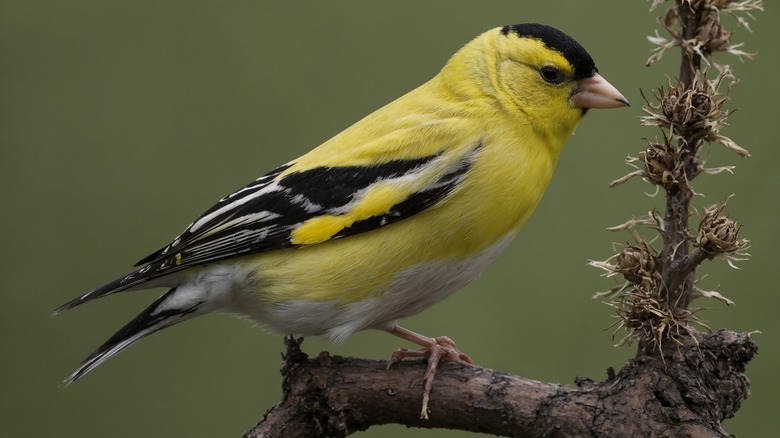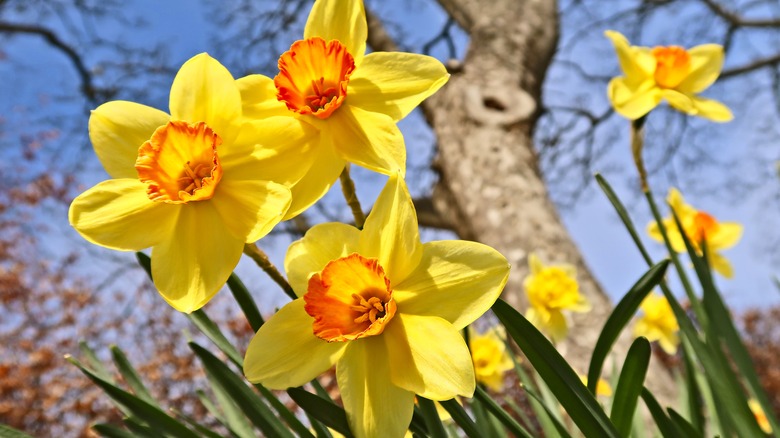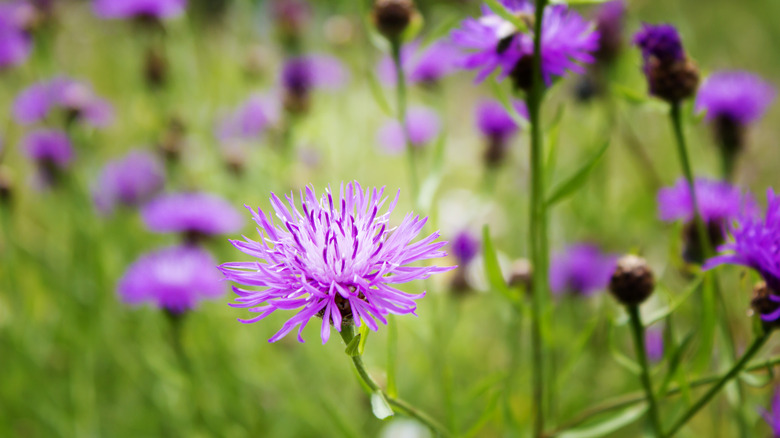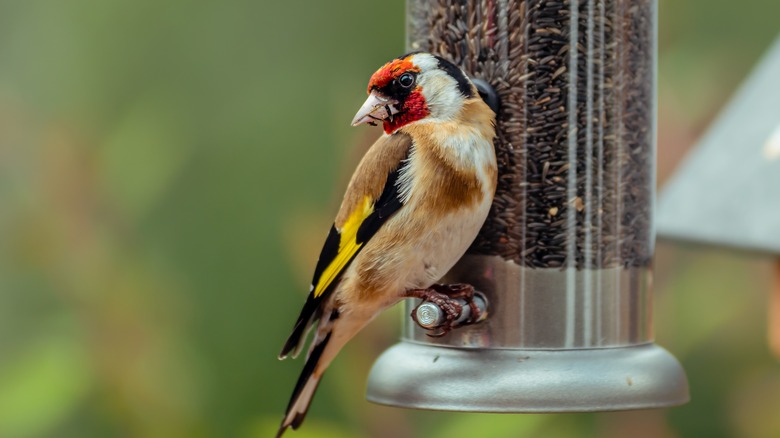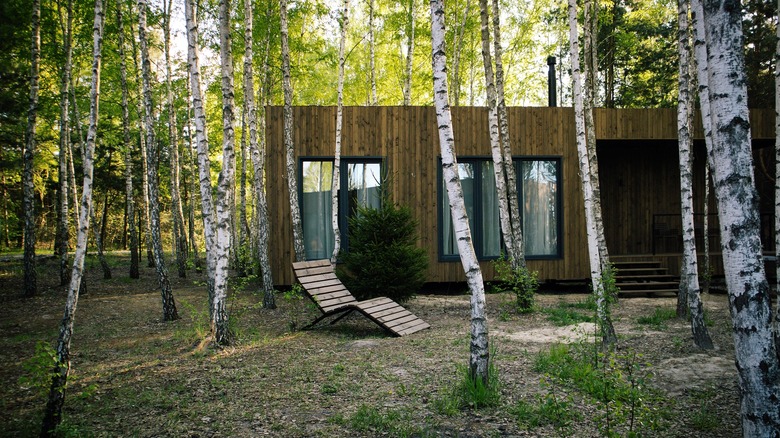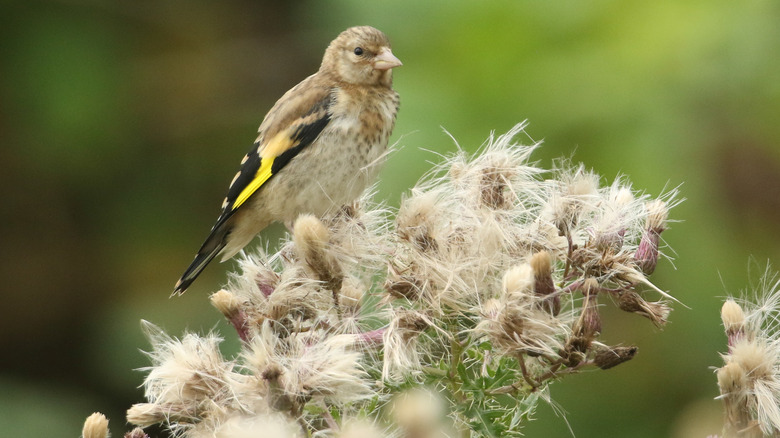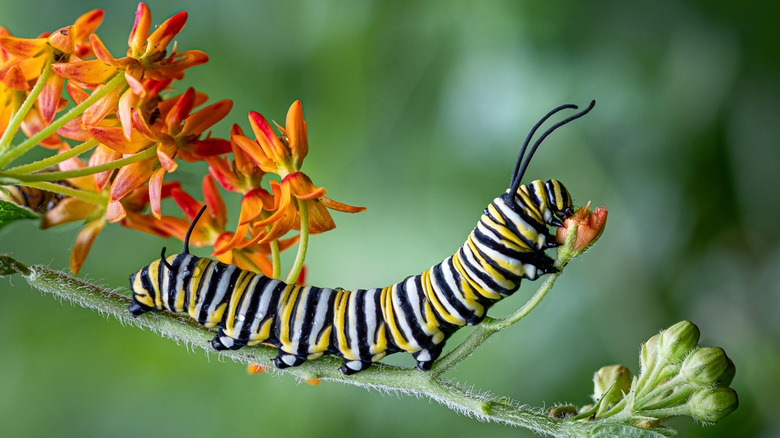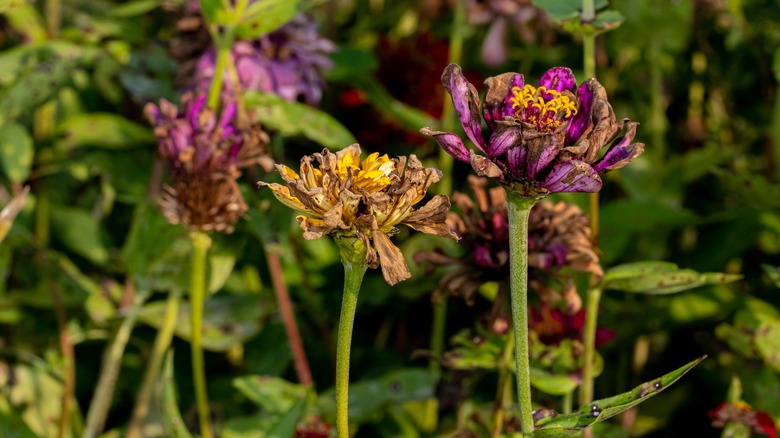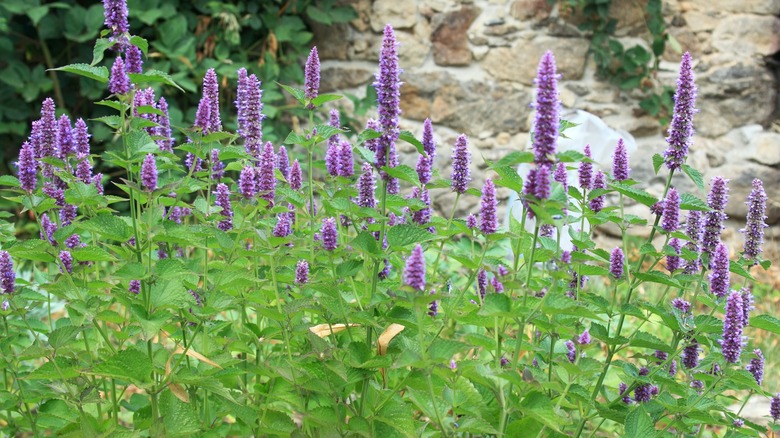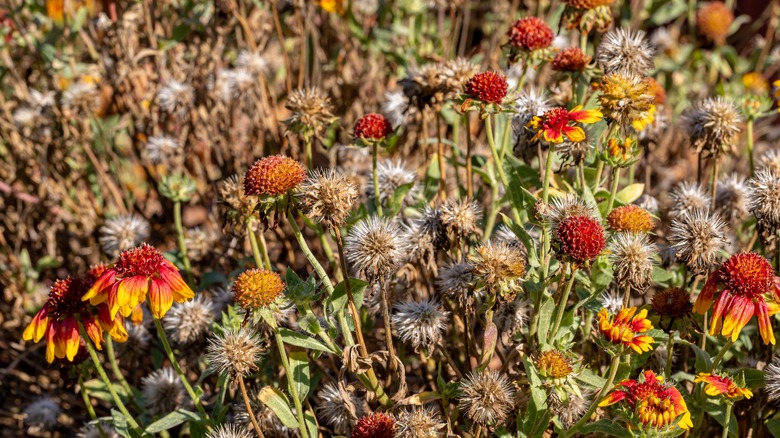Tips & Tricks To Attract More Goldfinches To Your Yard
We may receive a commission on purchases made from links.
Goldfinches have strikingly colorful feathers, especially in the warmer months of the year, making them a visual delight to spot in the garden. They also have a musical call and charming birdsong that will excite plenty of gardeners and birdwatchers. If you're a fan of the goldfinch, it's best to lure them to your yard and watch them in their natural environment rather than attempt to keep them as pets. They are protected by the Migratory Bird Treaty Act, which prohibits anyone from taking possession of these birds. They are very social creatures, who need the company of other finches and lots of space to fly free.
To witness these chirpy chicks in your backyard, there are various tips and tricks you can try. For those with large gardens, conifer trees and birch trees are known to produce seeds that attract goldfinches, while those with a smaller outdoor space might prefer to grow goldfinch-friendly flowers. Even people with a terrace garden or balcony can try to get a glimpse of these birds by using feeders specially designed to house nyger thistle seeds, a goldfinch's favorite food. Here are all of the different ways to attract them to your space.
Make your yard a yellow-flowered refuge for finches
Goldfinches, as their name indicates, are birds with golden-yellow colored plumage. In winter, much of their bodies are usually covered in golden tan feathers, while their wings are a striking contrast of vivid yellow and black. In summer, the males, in particular, can be seen with much brighter yellow bellies. A general rule for birds is that they are attracted to colors similar to their own feathers, which means goldfinches are drawn to yellow flowers. If you want to have more of these beautiful birds in your yard, grow an array of bright yellow blooms to pique their interest. Interestingly, many birds are said to be deterred by white flowers since white can act as a warning sign to our feathered friends. That's because birds often flash the white underside of their wings when a predator is near. For this reason, it's best to play it safe and avoid flowers that are predominantly white in color.
There are plenty of plants with yellow flowers that could help attract goldfinches, including daffodils, marigolds, and evening primrose. If you'd prefer trees that bloom with gorgeous yellow flowers, consider the golden chain tree (Laburnum anagyroides), which is favored for its stunning dangling lemon-colored blooms and its low maintenance care requirements. The golden bells plant (Forsythia x intermedia) is another great option for adding a shock of yellow to your garden. This deciduous shrub grows easily and can tolerate a range of lighting conditions. It is very forgiving in terms of growing needs, making it an ideal choice for beginner gardeners.
Let weeds go wild in your garden
Weeds might not be your favorite sight in the garden, but if you were looking from the perspective of a goldfinch, you might feel quite differently about these unruly plants. Lots of common weeds like dandelions, ragworts, and teasels produce seeds that goldfinches love. Their lightweight bodies and pincer-like bills make them perfect for extracting tiny seeds from these plants. To attract more goldfinches to your yard, simply allow these unfavorable plants to grow. This is a great tip for anyone who loathes weeding their garden because it gives you a great excuse to skip this dreaded task.
However, having these unruly plants in full view might not be appealing to most. A workaround is to designate a small area to let weeds run wild. Choose a patch away from your patio, deck, or sitting area so they don't impede your view. Behind some larger shrubs or in a hidden corner could work well. If your garden is on the smaller side, consider growing weeds that are more visually appealing, like knapweed. This purple-flowering plant produces dried seed heads that attract goldfinches, but be warned that it can be invasive and is prohibited in some states due to its status as a poisonous plant. To keep it in check, consider growing it in planters.
Fill a feeder with goldfinch favorites
A great way to attract more goldfinches to your yard is by filling your bird feeders with nyger thistle seed. This seed is known to be a favorite of these brightly colored birds, who will often choose them over other nearby options. Nyger thistle seeds are ideal if you prefer not to attract other bird species, as they primarily appeal to goldfinches, housefinches, purple finches, and pine siskins, while other birds generally ignore them.
Nyger thistle seed, also known as niger seed or thistle seed, tends to be more expensive than other types of bird feeder seed, at around $1.50 a pound. However, as goldfinches love this seed, it could be money well spent to see these feathered friends hovering around your yard. Nyger seed is also smaller than most other bird seeds, so don't use it with your existing feeders because it will fall out of the gaps. Instead, to ensure you're not wasting your money, choose a feeder specially designed for nyger thistle seeds. Those made from mesh with small feeding sections work best, like this one from Amazon.
Grow goldfinch-friendly trees for the birds to feed on
One way to keep goldfinches returning to your yard year after year is to grow trees that these birds like to feed on. Birches and conifers are both known to provide food for goldfinches in the wild, where they feast on the tree seeds. River birch (Betula nigra) trees are among the most popular birch trees for goldfinches, and along with providing food for our feathered friends, they are also a fast-growing tree that'll provide natural shade for your yard.
Before you get busy with your garden spade, you should learn about the best place in your yard to grow birch trees and conifers. Birch trees typically prefer moist or even wet soil in the case of the river birch, and a site that gets plenty of sunlight. Types of conifers such as the American arborvitae (Thuja occidentalis) and the Leyland cypress (× Cuprocyparis leylandii) are among the plants you shouldn't grow right next to your house. Typically, conifers work best around the perimeter of a garden, where they can serve as a living fence. Keep an eye on the female trees through late summer and fall when the ripe seeds attract goldfinches.
Goldfinches use thistle for food and for nesting
Goldfinches adore feasting on thistle seeds, but this plant isn't just a snack source for these fascinating creatures. They also use parts of thistle weeds to form their nests. Bull thistle (Cirsium vulgare) is used as nest lining by goldfinches, enabling them to create a waterproof home that will keep nestlings dry during wet weather. A study published by the Iowa Academy of Science found evidence that goldfinches time their breeding to match the availability of thistle seeds, which is quite late in the season compared with other birds. They use the tiny seeds to feed their young.
If you grow thistles in your garden, you're almost guaranteed to be visited by goldfinches, since in many areas these birds will nest exclusively in these plants. There are 58 different types of thistle native to North America, including field thistle (Cirsium discolor), marsh thistle (Cirsium palustre), and cobwebby thistle (Cirsium occidentale). Avoid trimming back the weeds in your yard, especially later in the season when they become most useful for goldfinches who are nesting. Since these delightful birds prefer to build nests in low-growing shrubs and trees in bushy spaces, allowing plants to become a little unruly will be an advantage in attracting them. You could keep your lawn and flowerbeds neatly trimmed and tidy, then designate an unmaintained section for wildflowers and shrubs at the back of your yard.
Encourage garden insects like caterpillars and grasshoppers
Gardeners usually spend time trying to find the best ways to get rid of grasshoppers, but if you want to tempt goldfinches into your yard, then keeping insects like this in supply is a good idea. Though goldfinches primarily feed on seeds, they will also seek out insects such as grasshoppers and caterpillars when they are nesting, which is usually in late summer. If you're concerned about inviting these creatures into your yard, you needn't be. Caterpillars are another common metaphorical stone in the gardener's shoe, but they can also be beneficial to your backyard. Though caterpillars might nibble on your plant foliage, they rarely cause catastrophic damage. They grow up into butterflies, which are important pollinators in any garden ecosystem.
To encourage beneficial insects to set up camp in your garden and lure goldfinches to your yard, you'll want to create an environment where caterpillars and grasshoppers thrive. Some herbs, such as dill and parsley, are known for being popular among caterpillars, and they are also drawn to hollyhock, milkweed, and snapdragons. To attract grasshoppers, plant zinnias in your garden, but be warned that these jumping insects can become problematic in the event of an outbreak. Some species of grasshopper can defoliate plants, which usually results in a swift decline.
Allow plant debris to accumulate in July and August
Thinking of tidying up your summer garden? Don't dive in just yet. Goldfinches build their nests in July and August using debris they find among fading plants and weeds. They not only use the seed-carrying fluff from weeds, as we mentioned, but also collect plant fibers and grasses.
While allowing garden debris to accumulate can help out nesting goldfinches, it's important to balance this with any negative effects that a build-up of waste could create. Garden debris piles are associated with attracting unwanted pests like rats and snakes, who like to hide out in long grass or under stacks of leaves. If you've experienced pest problems in the past, or your neighborhood is known to struggle with these types of issues, then it's best to keep your garden as neat and tidy as possible. For those who aren't worried about pests, spring is the best time of year to clean up your garden. This allows goldfinches access to all of the nesting materials they need and gives insects a safe place to shelter through winter.
Plant flowers that goldfinches favor
Another way to attract goldfinches to your is to plant flowers the birds are known to enjoy. Some plants in particular, like purpletop vervain (Verbena bonariensis), anise hyssop (Agastache foeniculum),and the large coneflower, (Rudbeckia maxima), are regarded as magnets for goldfinches. Not only will they bring finches flocking, but they also have the advantage of making your garden more beautiful.
It's easy to grow and care for coneflowers, so if you're looking for an easygoing plant to attract goldfinches, this could be the one for you. It's a great pollinator that will have butterflies swarming your yard, and once the flowers have gone to seed they will attract the birds. Anise hyssop and blanket flower are both short-lived perennials. Anise hyssop seeds are popular with goldfinches, and the plant also brings attractive purple flowers and scented foliage to the table. Blanket flowers produce daisy-like blooms in shades of red, orange, and yellow. They are commonly visited by bees, butterflies, and goldfinches.
Restrain from deadheading all flowers
Deadheading flowers after they are spent is a common way to help promote new growth. Some flowers, once they have been deadheaded, can bloom again within the same season. However, if you want to attract goldfinches to your yard, you'll need to resist deadheading some of your plants. These birds feed on the seeds that develop on plants after flowers have faded. If you deadhead your blooms you could be depriving goldfinches of an important food source, and depriving yourself of the opportunity to witness them. (However, these seeds typically form at the end of the season, so you can still remove any spent blooms during the spring and beginning of summer.)
The pretty yellow birds aren't going to be interested in the seeds from all of the flowers in your yard, so you don't need to completely ban deadheading. Focus on leaving those that are known to be popular among goldfinches. This will make for a good balance so the birds have plenty of seeds to eat, and you still get to enjoy a relatively well-tended garden. Flower seeds that are popular include coneflowers, asters, and zinnias, so show some restraint once the blooms on these plants have faded.
